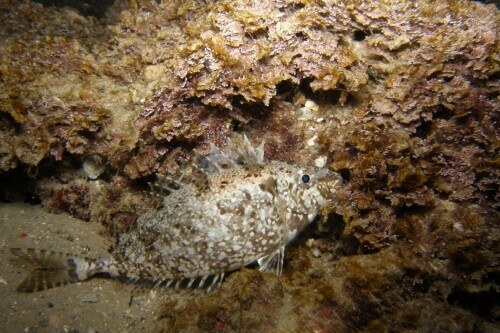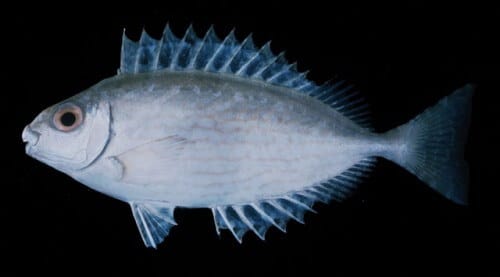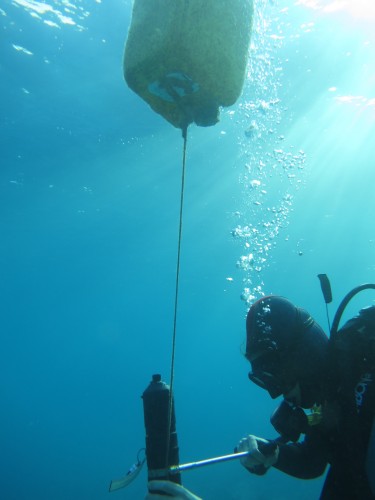How did two small fish species change the sea urchin's habitat in the Mediterranean, and how do underwater microphones teach us about ecological invasions?
Itay van Rijn

Arnav enters the restaurant, sits down next to a hedgehog eating seaweed and starts eating from his plate. He eats and eats, orders another dish and another dish, and when he finishes eating it turns out that he didn't leave even one small crumb of seaweed for the hedgehog. This sounds like the beginning of a somewhat strange and complex joke, but it is a Mediterranean story that is happening right under our noses, and which involves, among other things, a migratory fish of the Sichen type (called in English: Rabbit Fish), sea lettuce and a local sea urchin. A new Israeli study, which uses advanced technology, tries to get to the bottom of the phenomenon.
The sikhan fish of the species Indian sikhan and marbled sikhan are among the most successful of the marine invaders that penetrated the Mediterranean Sea through the Suez Canal. These are quite old immigrants: the marbled harrier was first recorded in 1927, while its relative the Indian harrier was seen here some time later, in 1964. At first the dangers were documented in the eastern basin of the Mediterranean Sea, but since 2000 the first reports have been published about their presence in more northern areas, such as the Adriatic Sea, and even a single report was received from the coast of France. The Israeli fishermen know the fish well and call it "venom", after the painful sting of its fins.
Although it is a relatively small fish (its length reaches about 30-20 centimeters) that is not endowed with spectacular colors or an unusual shape, the fish arouses great interest due to its preferred diet - this species is defined as an obligate herbivore (committed to vegetarianism). That is, it feeds exclusively on algae. Its diet is unusual among Mediterranean fish - most of them feed on living matter, such as invertebrates and fish. Vegetarian fish are rare in the Mediterranean. Seaweed is often used as food for another familiar animal - the sea urchin.
In the past, sea urchins were common on the coast of Israel, but in recent years they have become extremely rare. Are the dangerous fish responsible for this? It seems that a lack of competition and a large amount of algae that characterizes the rocky habitat in the Mediterranean allowed the risk populations to become dominant among the rockfish. In various surveys that looked at the composition of the fish in the rocky area, the dangers represented up to half of the entire company. However, it seems that the marine plant resource is not inexhaustible and the appetite of the dangers is very large. The large number of threats also indicates a paucity or absence of predators for this poisonous fish.

Exposed rocks
When the Spanish marine researcher Dr. Enrique Sala visited Turkey a few years ago, he discovered extensive areas of rock exposed to algae (reveal rock), sometimes hundreds of meters long. In an article he published on the subject in the scientific magazine Plos One, he described that the main suspects in eating the algae, the sea urchins, were not observed in large numbers in the area. On another look, Sala noticed schools of dangerous fish that frequent the reef and therefore decided to investigate whether their activity might explain the absence of algae.
In the first phase of his research, Sala recorded the rockfish and found that the fish represented about half of the total fish biomass in the examined sites. Then he erected plastic cages in the area that prevent the entry of dangers, to test whether this would lead to a renewed bloom of algae. He soon discovered that under the protection of the plastic cages, algae returned to the pancreas and another vertical dimension of the algae stalks to the rock. Because the cicadas are the main algae eaters in the area, Sala attributed the formation of the rock outcroppings to them.
Sala's research strengthened the claim that the sea urchins may cause a lot of competition for the local algae eaters, but did the sea urchins cause the disappearance of the urchins in our area? Opinions on this differ. An alternative theory holds that an increase in the temperature of the sea water is the one that caused damage to the urchin populations. In a study expected to be published soon, Erez Yeruham from Tel Aviv University showed that the high temperatures measured on the coasts of the country at the height of summer lead to the death of adult sea urchins.
The fish are also used as a model animal in an innovative study conducted by Rannal Pickholz from Tel Aviv University. "There is a lot of talk about the process of species invading a new area, but most studies look at the species as a whole and do not delve into the behavior of individuals," says Pickholz. As part of his research, the movement of individuals in space is examined, in order to examine how they utilize their new habitat. The research in Israel allows another interesting angle because here the endangered fish can be found both in their natural habitat - the Gulf of Eilat - and in the habitat they have invaded - the Mediterranean Sea. "In Eilat, it seems that the presence of threats is almost marginal in society as a whole," says Pickholz. "Surveys carried out revealed that all vegetarian fish make up only about four percent of reef fish and the dangerous ones are included in this part. In the Mediterranean, on the other hand, they appear in large flocks."
For the purpose of the research, Pickholz set up an array that includes 20 hydrophones (underwater microphones) that pick up transmissions from tags attached to hazards. "The receivers determine the location of the tag according to the time when the broadcast arrives at each of the receivers," he explains. The data analysis allows high-resolution XNUMXD tracking of the movements of each individual for several months.

Life on a football field
The first result that emerged from this study is that the fish spend their adult lives in a rather limited environment. "The habitat of a common peregrine falcon is about the size of a football field and a half", says Pickholz. "This figure is interesting because for several years the dangers have spread to quite distant parts of the Mediterranean Sea. It seems that most of the spreading process in the new habitat takes place in the larval stage (the young life stage in which the fish spend time in the water body, AOR) and it is not about adults swimming to distant areas."
"We saw that the fish in Eilat spend time in a more limited area," says Pickholz about the differences in the movement patterns of the fish between the Red Sea and the Mediterranean Sea. "They are also more loyal to a specific point from which they leave and to which they return every day. In contrast, the fish in the Mediterranean Sea are more mobile and sometimes change lodging sites." And what could be a possible explanation for this? "It seems that under conditions of great competition, such as in the Red Sea, the risk-takers are forced to reduce their living area and stay in a place they know well. In the Mediterranean, on the other hand, the lack of competition and the wealth of food allow them to cover larger areas."
Pickholz also notes that the hydrophone system he set up may be used for further research. "This is a first-of-its-kind system that enables accurate tracking of the animal's location. I invite more researchers to examine movement patterns of species that interest them." Indeed, it is possible that Pickholz's system will soon also be used to monitor stingrays, which are predators in the rocky habitat. Thus, it will be possible to compare the movement of the prey to the movement of the predators in the habitat.
It seems that ever since the peregrine falcons arrived in the Mediterranean they are thriving and continuing to move west, away from their original habitat. On their way, they gather in large flocks, which leave behind rocks exposed to algae and may even cause the suppression of local species. Whatever their impact, it seems the risks are here to stay. It remains for us to take advantage of their success to try and learn more about the intriguing mechanism by which species invade new habitats and change them.
For the article on the Angle website
More of the topic in Hayadan:

2 תגובות
Interesting article but...
It is appropriate that whoever writes in Hebrew
knew that the "Red Sea" was a name created as a result of confusion in translation,
The name of the branch from the Indian Ocean is Yam-Suf,
What's more, the reference in the article is to Israel
It is true that the Gulf of Eilat is an arm of the Red Sea
But referring to geographic areas it is appropriate to be precise,
In any case, the "Red Sea" is not in Hebrew.